David Lamb's "U" channel setups
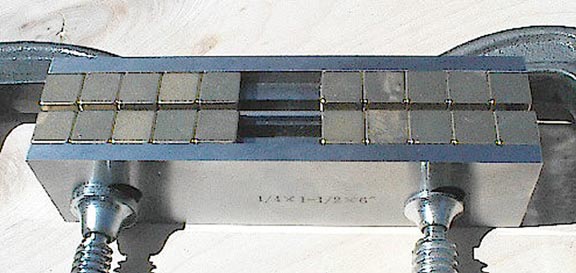
000805-001a
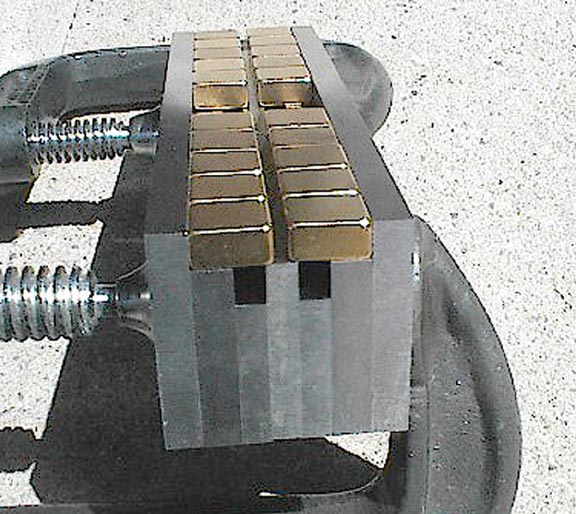
000805-003a
The above two photos are a variation of David's "U" seismometer design. All the steel are machinist parallels temporarily clamped together. The gold colored magnets can actually be laid where the poles can be varied; except that the magnets on the other side of the gap usually must be laid out to where they repell. The top photo shows a piece of levitated spectrographic rod (a light gray horizontal line in the center). The magnet poles are actually physically 1/2 the thickness of the horizontally laid out view/s of the discreet magnets.
If one can visualize the second photo where the magnets gap are located, a MAJOR improvement can be made by the introduction of a oblong (keystock, or square rod) steel spacer that is the same height as the lower pole is thick. David Lamb did so with his "H" design, which normally has two channels. Now...instead of the levitated graphite being down in the channel, it has a tendency to levitate around the top of the magnets with spectrographic rod; and for gas diffusion PG, a major portion of the levitated assembly can actually levitate above the top of the magnets surface. With added dampening and/or optical flags for ouput, the PG will be much better in its capacity to carry a limited load. Spectrographic (or susceptible pencil leads) can work here also, but their added weight lift capacity for dampening or optical flags loads is alot less.
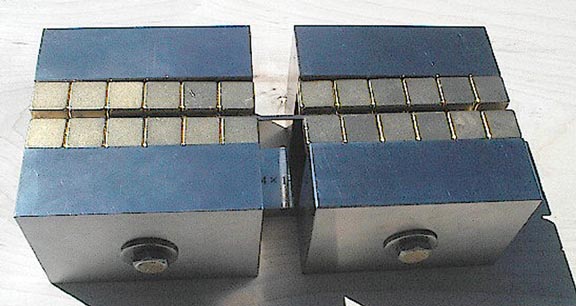
000805-004a
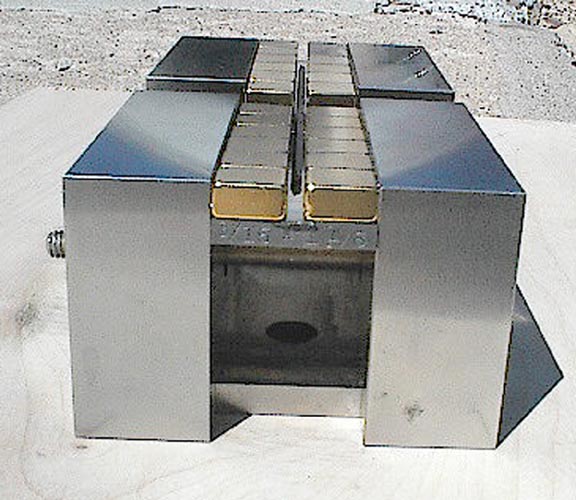
000805-005a
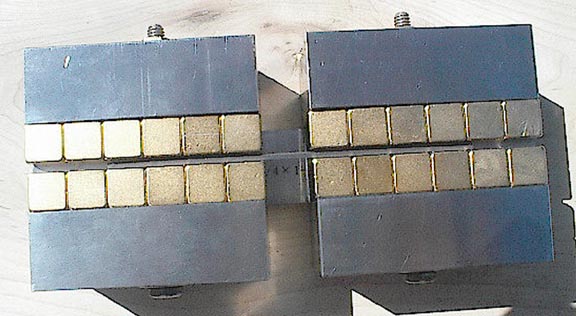
000805-006a
The above three photos are a rough temporary duplication variation of David's "U" designed diamagnetic setup. The name comes the end view of the actual levitation gap. All three pictures show a piece of levitated spectrographic rod with no dampening or optical flag attachments. All of steel used are machinist tool steel items; parallels and the so called "1-2-3" blocks. One can vary the magnets polaritys for dampening efforts with aluminum/copper foil attached to the graphite.
In the central picture, one can note the slight inclination of the magnets towards the center of the assembly; this was originally done to stabilize the graphite rod within the assembly. The angle of inclination yielded various periods of oscillation. Generally the period did not get much beyond 6 seconds. None of the pictured magnets are currently available from the original seller....which is a continuing problem with obtaining magnets.